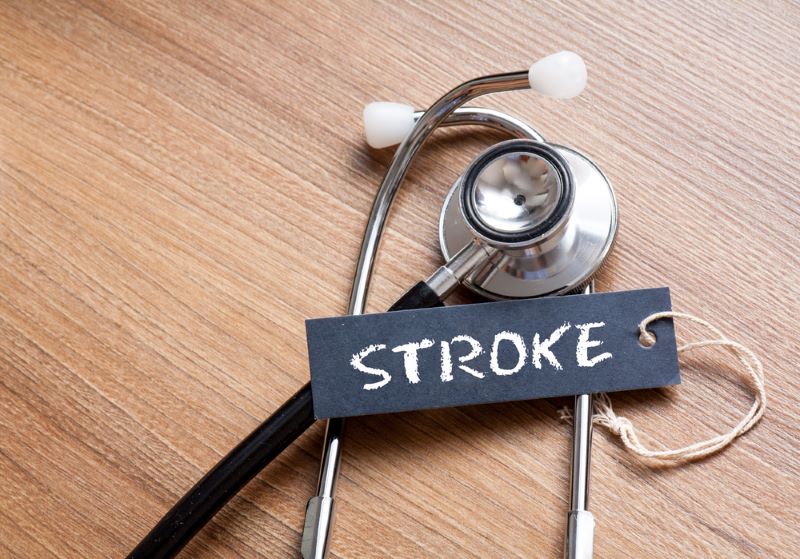Click Here to view More Content Writing Examples.
Main Keyword (in italic): stroke, causes of stroke, symptoms of stroke
Secondary Keywords (in italic): Throughout Content.
 What is a Stroke?
What is a Stroke?
When a loved one has a Stroke it is important for friends and family to understand that illness so as to understand what the patient is going through and assist them if possible. A Stroke occurs when a part of the brain loses its blood supply. A stroke is one of those illnesses that when diagnosed you should immediately call your doctor or emergency phone line. We will go through some stroke statistics, causes, symptoms, treatments and some preventative measures.
How a Stroke occurs?
80% of Strokes are the result of a clot blocking an artery which is called a Ischaemic Stroke. 20% of strokes have to do with an artery bursting (Haemorrhagic stroke). Sometimes symptoms get resolved within 24hrs and this is called a Transient Ischaematic attack (TIA). Every year more than 795,000 people in the United States have a Stroke. About 610,000 of these are New Strokes. About 185,000 strokes (one in four) are people who have had a previous stroke. Strokes can occur at any age. But most of them occur over the age of 65. The rate of Stroke occurrence is dropping. But we note that it still causes 1 in 20 deaths. We also note that one third of stroke survivors end up with some sort of disability. Men are at greater risk of stroke than women.
Two main types of Stroke
There are two main types of Stroke. Ischaemic Stroke and Haemorrhagic Stroke. An Ischaemic stroke is caused by a blood clot. When you are bleeding from a wound a blood clot works to lessen and slow the bleeding. But in the case of a Stroke blood clots are dangerous because they can block arteries and cut off blood flow. There are two types of Ischaemic stroke: Embolic Stroke and Thrombotic Stroke. If a blood clot forms somewhere in the body (usually the heart) it can travel through the blood stream on into your brain. This is called an Embolic Stroke. When blood flows through the arteries it may leave some cholesterol “plaques” behind that stick to the inner wall of the artery. In the case of a Thrombotic Stroke the plaques affect the major arteries in the neck taking blood to the brain.
Causes of Stroke
Now we will discuss the causes of Stroke. High blood pressure (Hypertension) is the most common known risk factor for stroke. High blood pressure can lead to a stroke in several ways: It damages blood vessel walls and makes them weaker, It can speed up common forms of heart disease, It can cause blood clots or plaques to break off artery walls and block a brain artery. Quite simply the higher the blood pressure, the greater the Stroke risk. If you have type 2 diabetes your body becomes resistant to insulin and it does not make enough insulin to keep up. People with diabetes are also more likely to have high blood pressure which can increase your chance of a stroke.
High Cholesterol also known as Hyperlipidemia or Dyslipidemia impacts on blood vessell disease and this can lead to stroke. There are two types of cholesterol: low-density lipoprotein (LDL) which is the bad cholesterol. Then there is High Density Lipoprotein (HDL) which is the good cholesterol. The more HDL you have will lower your risk for Stroke. Irregular pulse or irregular heartbeat is known as atrial fibrillation (AF). In AF the upper chambers of the heart (atria) beat rapidly and out of the rhythm with the lower chambers of the heart (ventricles). Because the blood is not properly pumped away, a clot can form in the heart. The clot can then breakaway from the heart and travel to the brain where it may cause a stroke.
Symptoms of Stroke
The symptoms of Stroke may include: Headache, Dizziness, loss of consciousness, experiencing a seizure, weakness of side of face, weakness of limbs, skin sensation changes, slurred speech, difficulty understanding speech, memory loss and incontinence. You may have had a history of hypertension or blood pressure, Physical inactivity, unhealthy blood fat levels. Also, regular meat consumption with lack of green vegetables. Excess salt and sugar consumption. High waist to hip ratio, stresses at home or work, smoking, heavy alcohol drinking, heart disease and diabetes. To find the type and the location of the Stroke the patient must get a Computerised Tomography (CT scan) and/or an Magnetic Resonance imaging (MRI). Other tests sometimes are also conducted.
If you or someone you know is having a stroke, pay attention to the symptoms that are occurring. Five core symptoms are: Trouble speaking and understanding what others are saying, Paralysis or numbness of the face, arm or leg, Problems seeing in one or both eyes, Headache, Trouble walking.When you experience the symptoms above see a doctor. To simplify the list you can think of the FAST acronym. FAST stands for Face, Arms, Speech, Time. Face: Ask the person to smile, does one side of the face droop? Arms: Ask person to raise both arms. Speech: Ask person to repeat simple sentences. Is there speech slurred. Time: If any symptoms above are experienced Call the emergency line immediately.
Patients that have been diagnosed with Ischaemic Stroke have to receive clot-removal treatment within a few hours of symptoms. There are two treatments that are necessary here. Firstly, a clot-busting drug is given into a vein (thrombolysis). Secondly a catheter is threaded through the femoral artery in the groin up to the brain. This is where the clot is collected and removed. This is called endovascular clot retrieval. Other forms of treatments include blood pressure control and assessment and treatment of issues related to swallowing, nutrition, speech, mobility and cognitive function. Proper rehabilitation may reduce the risk of death and disability. This rehabilitation starts with days of diagnosis. The treatment is customised to the patients needs and goals.
90% of Strokes are preventable
Up to 90% of Strokes are preventable. Stroke Risk can be reduced by not smoking, a healthy diet, regular exercise, losing weight if overweight or obese, taking medication to reduce hypertension or improve levels of blood fats. Basically you need lifestyle changes. Strategies after stroke include long-term medications as follows: Blood pressure medication (for all patients), For people with ischaemic stroke and TIA they are given Blood Thinners and Cholesterol lowering statins, Improving chronic medical problems such as diabetes and atrial fibrillation, Surgery may be an option such as for people with a narrowed carotid artery.
Conclusion
It is important for the Stroke patient and their family/friends to be well informed about the illness. That way the friends and family can better support the patient and even give suggestions for remedies and medication. Modern medicine has done wonders for stroke victims. As soon as a Stroke is diagnosed it is imperative that action be taken. Call your doctor or the emergency line immediately. There are also different types of strokes, causes and symptoms that we have covered in this article.

